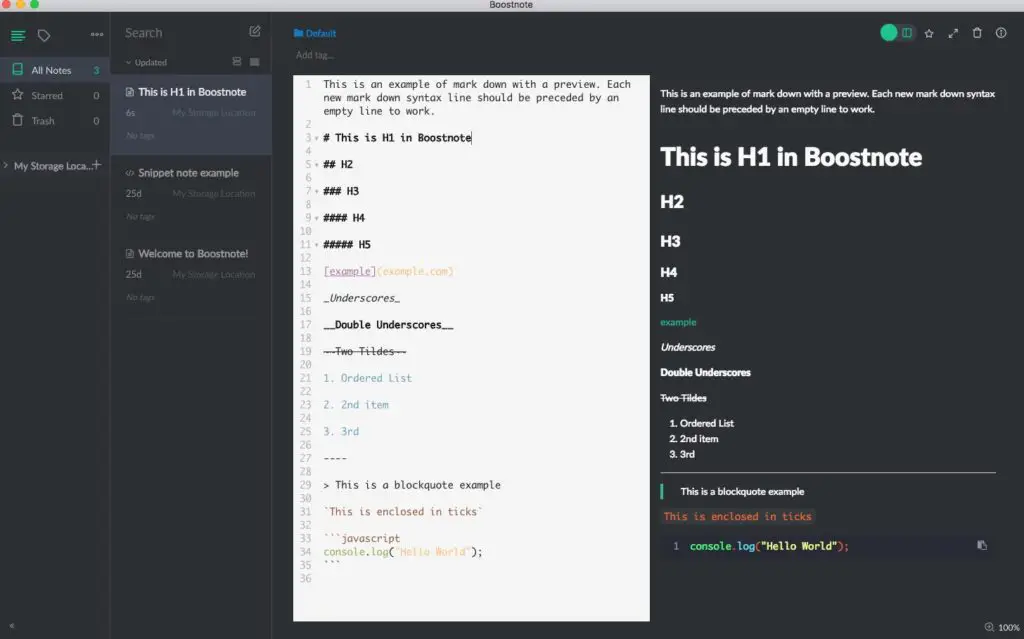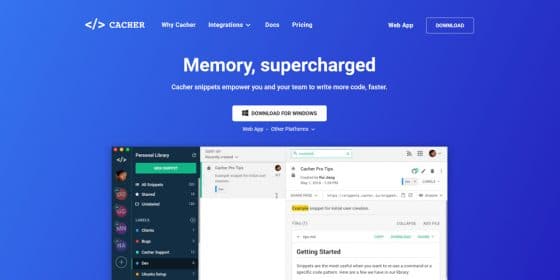

Markdown was designed with the explicit intention to be easily readable by humans. Once you start writing in Markdown, it’s really hard to back to the click-fest of the past. It might seem like a small detail, but it can have a really big effect. In short: You never have to stop typing or think about anything else in order to apply your styles. Markdown allows you to keep your fingers firmly planted on the keyboard as you apply formatting on the fly.

This process creates a tiresome, disjointed experience when all you want to do is get the words out of your head and onto the screen. Using a traditional writing user interface you have to pause your writing every few minutes (or sometimes seconds) and reach for the mouse in order to click, highlight, click a formatting button, and then click back to where you left off in order to continue. While most novice users do indeed find buttons a bit easier to use, advanced writers often swear by Markdown and nothing else. The range of formatting tools has come a very long way since Markdown’s inception in 2004, so you’d be forgiven for wondering what advantages it holds over, say, the “Bold” button in Microsoft Word. Very true! But we’re only just getting started. “Is that it?” - I hear you ask - “I could just click on a few formatting buttons in most editors and achieve the same thing!” With just a couple of extra characters, Markdown makes rich document formatting quick and beautiful. The quick brown fox, jumped over the lazy dog. Here’s a quick example of Markdown in action: The *quick* brown fox, jumped **over** the lazy (). He devised a simple writing system which would make web based documents both easier to write, and easier to read in their raw state. It allows you to quickly write structured content for the web, and have it seamlessly converted to clean, structured HTML.īack in 2004, Apple pundit John Gruber came up with the idea after becoming frustrated by writing long, laborious HTML tags to properly format his content. Markdown is a plain text formatting syntax for writers. We thought we’d put together an all inclusive guide to make that curve a little bit shorter, and potentially teach you a few super-user tricks to Markdown that you might not have known. To get to that point, however, there’s a little bit of a learning curve. Once you get the hang of Markdown, it’s an incredibly powerful writing tool which will allow you to write rich content for the web far faster than almost any other method.

We built our editor to work with Markdown directly! RabbitMQ is written in Erlang which was specifically designed by the telecom industry to route messages, you get clustering out of the box due to it being written in Erlang which means in a clustered environment, RabbitMQ will outperform Redis even further.įurthermore, you get guaranteed delivery of messages due to the AMQP protocol, in other words, if the network drops while consuming the message, the consumer won't be able to say thanks for the message, so the consumer will drop the message and Rabbit will requeue the message, if you publish a message and the queue didn't say thanks to the publisher due to network problems or timeouts, Rabbit will drop the message and the publisher will keep on trying to publish the message.It’s no secret that we’re big fans of Markdown at Ghost. Redis is Database whereas RabbitMQ was designed as a message router or message-orientated-middleware (mom), so I'm sure if you look for benchmarks, you'll find that RabbitMQ will outperform Redis when it comes to message routing.


 0 kommentar(er)
0 kommentar(er)
